Anxiety
Anxiety is characterized by excessive tension and worry. Unlike fear, it is persistent and future oriented. There are many types of anxiety disorders, including generalized anxiety, social anxiety, phobias, and panic disorder.
Anxiety falls under theMental Healthcategory.
Last Updated:August 16, 2022
Anxiety, as defined by the American Psychological Association (APA), is an emotion characterized by apprehension and bodily symptoms of tension and the anticipation of impending danger.[1] In anxiety disorders, the feelings of fear, dread, and uneasiness are persistent and can be overwhelming. Moreover, the intensity of these feelings can increase over time and interfere with normal daily activities.
The main signs and symptoms of anxiety include:
- Behavior changes, such as avoiding previously normal activities
- Anxious thoughts or beliefs that are hard to control and do not go away or improve over time
- Pounding or rapid heartbeat
- Aches and pains
- Dizziness
- Shortness of breath
Anxiety is diagnosed through a psychological evaluation performed by a clinician.[1] The psychological evaluation is typically based on diagnostic criteria set by a publication such as the Diagnostic and Statistical Manual of Mental Disorders (DSM; used in the U.S) or the International Statistical Classification of Diseases and Related Health Problems (ICD; used by the World Health Organization).
Antianxiety medications like beta-blockers and antidepressants are commonly used either alone or in conjunction with therapy. Cognitive behavioral therapy (CBT) works well for many anxiety disorders, especially in combination with medications.[1]
Compared to typically less-healthy diets such as the Western diet, the mediterranean-diet and vegan have some evidence for their ability to improve mood, although more research is necessary to confirm this effect and whether it extends to anxiety relief.[2]
Some evidence shows that meditation can reduce anxiety symptoms,[3] particularly among anxious individuals without diagnosed disorders.[4] High-intensity aerobic exercise and resistance training may be effective for treating anxiety disorders.[5][6] Additionally, binauralbeats and cannabidiol have both been studied for anxiety-related outcomes and seem to provide modest benefits.
The causes of anxiety disorders are complex, and risk factors can differ by the type of anxiety (e.g., separation anxiety, generalized anxiety, panic). Genetics, environment, and brain biology can all play a role. Generally speaking, exposure to traumatic or highly stressful events, a family history of anxiety disorders, certain health conditions (e.g., thyroid dysfunction, arrhythmias), and certain personality traits (e.g., excessive shyness) are all associated with an increased risk of having anxiety.
Looking for a Supplement guide?
Our Supplement Guides give you unbiased research-based recommendations that you can immediately apply to improve your health. Anxiety is related to the following Supplement Guide:- ^The content of this page was partially adapted from MedlinePlus of the National Library of Medicine
- ^Joseph Firth, James E Gangwisch, Alessandra Borisini, Robyn E Wootton, Emeran A MayerFood and mood: how do diet and nutrition affect mental wellbeing?BMJ.(2020 Jun 29)
- ^Blanck P, Perleth S, Heidenreich T, Kröger P, Ditzen B, Bents H, Mander JEffects of mindfulness exercises as stand-alone intervention on symptoms of anxiety and depression: Systematic review and meta-analysisBehav Res Ther.(2018 Mar)
- ^Chen KW, Berger CC, Manheimer E, Forde D, Magidson J, Dachman L, Lejuez CWMeditative therapies for reducing anxiety: a systematic review and meta-analysis of randomized controlled trialsDepress Anxiety.(2012 Jul)
- ^Aylett E, Small N, Bower PExercise in the treatment of clinical anxiety in general practice - a systematic review and meta-analysisBMC Health Serv Res.(2018 Jul 16)
- ^LeBouthillier DM, Asmundson GJGThe efficacy of aerobic exercise and resistance training as transdiagnostic interventions for anxiety-related disorders and constructs: A randomized controlled trialJ Anxiety Disord.(2017 Dec)
- ^H Woelk, S SchläfkeA multi-center, double-blind, randomised study of the Lavender oil preparation Silexan in comparison to Lorazepam for generalized anxiety disorderPhytomedicine.(2010 Feb)
- ^Lakhan SE, Vieira KFNutritional and herbal supplements for anxiety and anxiety-related disorders: systematic reviewNutr J.(2010 Oct 7)
- ^Saeed SA, Bloch RM, Antonacci DJHerbal and dietary supplements for treatment of anxiety disordersAm Fam Physician.(2007 Aug 15)
- ^Boyle NB, Lawton C, Dye LThe Effects of Magnesium Supplementation on Subjective Anxiety and Stress-A Systematic ReviewNutrients.(2017 Apr 26)
- ^Wipfli BM, Rethorst CD, Landers DMThe anxiolytic effects of exercise: a meta-analysis of randomized trials and dose-response analysisJ Sport Exerc Psychol.(2008 Aug)
- ^Bibeau WS, Moore JB, Mitchell NG, Vargas-Tonsing T, Bartholomew JBEffects of acute resistance training of different intensities and rest periods on anxiety and affectJ Strength Cond Res.(2010 Aug)
- ^Broman-Fulks JJ, Berman ME, Rabian BA, Webster MJEffects of aerobic exercise on anxiety sensitivityBehav Res Ther.(2004 Feb)
- ^Stein JM, Papp LA, Klein DF, Cohen S, Simon J, Ross D, Martinez J, Gorman JMExercise tolerance in panic disorder patientsBiol Psychiatry.(1992 Aug 1)
- ^Broocks A, Meyer TF, Bandelow B, George A, Bartmann U, Rüther E, Hillmer-Vogel UExercise avoidance and impaired endurance capacity in patients with panic disorderNeuropsychobiology.(1997)
- ^Esmaily H, Sahebkar A, Iranshahi M, Ganjali S, Mohammadi A, Ferns G, Ghayour-Mobarhan MAn investigation of the effects of curcumin on anxiety and depression in obese individuals: A randomized controlled trialChin J Integr Med.(2015 May)
- Cortisol - Pirbudak L, Balat O, Cekmen M, Ugur MG, Aygün S, Oner UEffect of ascorbic acid on surgical stress response in gynecologic surgeryInt J Clin Pract.(2004 Oct)
- Cortisol - K Chandrasekhar, Jyoti Kapoor, Sridhar AnishettyA prospective, randomized double-blind, placebo-controlled study of safety and efficacy of a high-concentration full-spectrum extract of ashwagandha root in reducing stress and anxiety in adultsIndian J Psychol Med.(2012 Jul)
- Cortisol - Salve J, Pate S, Debnath K, Langade DAdaptogenic and Anxiolytic Effects of Ashwagandha Root Extract in Healthy Adults: A Double-blind, Randomized, Placebo-controlled Clinical StudyCureus.(2019 Dec 25)
- Anxiety Symptoms - Andrade C, Aswath A, Chaturvedi SK, Srinivasa M, Raguram RA double-blind, placebo-controlled evaluation of the anxiolytic efficacy ff an ethanolic extract of withania somniferaIndian J Psychiatry.(2000 Jul)
- Anxiety Symptoms - Langade D, Kanchi S, Salve J, Debnath K, Ambegaokar DEfficacy and Safety of Ashwagandha (Withania somnifera) Root Extract in Insomnia and Anxiety: A Double-blind, Randomized, Placebo-controlled StudyCureus.(2019 Sep 28)
- Anxiety Symptoms - Cooley K, Szczurko O, Perri D, Mills EJ, Bernhardt B, Zhou Q, Seely DNaturopathic care for anxiety: a randomized controlled trial ISRCTN78958974PLoS One.(2009 Aug 31)
- Anxiety Symptoms - Camellia Akhgarjand, Farzaneh Asoudeh, Amir Bagheri, Zahra Kalantar, Zahra Vahabi, Sakineh Shab-Bidar, Hamid Rezvani, Kurosh DjafarianDoes Ashwagandha supplementation have a beneficial effect on the management of anxiety and stress? A systematic review and meta-analysis of randomized controlled trialsPhytother Res.(2022 Aug 25)
- Cortisol - Seol GH, Lee YH, Kang P, You JH, Park M, Min SSRandomized Controlled Trial for Salvia sclarea or Lavandula angustifolia: Differential Effects on Blood Pressure in Female Patients with Urinary Incontinence Undergoing Urodynamic ExaminationJ Altern Complement Med.(2013 Jan 29)
- Cortisol - Shawn M Talbott, Julie A Talbott, Annie George, and Mike PughEffect of Tongkat Ali on stress hormones and psychological mood state in moderately stressed subjectsJISSN.()
- Cortisol - Kang HJ, Nam ES, Lee Y, Kim MHow Strong is the Evidence for the Anxiolytic Efficacy of Lavender?: Systematic Review and Meta-analysis of Randomized Controlled Trials.Asian Nurs Res (Korean Soc Nurs Sci).(2019-Dec)
- Anxiety Symptoms - Kasper S, Gastpar M, Müller WE, Volz HP, Möller HJ, Dienel A, Schläfke SSilexan, an orally administered Lavandula oil preparation, is effective in the treatment of 'subsyndromal' anxiety disorder: a randomized, double-blind, placebo controlled trialInt Clin Psychopharmacol.(2010 Sep)
- Anxiety Symptoms - B Uehleke, S Schaper, A Dienel, S Schlaefke, R StangePhase II trial on the effects of Silexan in patients with neurasthenia, post-traumatic stress disorder or somatization disorderPhytomedicine.(2012 Jun 15)
- Anxiety Symptoms - J Lehrner, G Marwinski, S Lehr, P Johren, L DeeckeAmbient odors of orange and lavender reduce anxiety and improve mood in a dental officePhysiol Behav.(2005 Sep 15)
- Anxiety Symptoms - H Woelk, S SchläfkeA multi-center, double-blind, randomised study of the Lavender oil preparation Silexan in comparison to Lorazepam for generalized anxiety disorderPhytomedicine.(2010 Feb)
- Anxiety Symptoms - Yap WS, Dolzhenko AV, Jalal Z, Hadi MA, Khan TMEfficacy and safety of lavender essential oil (Silexan) capsules among patients suffering from anxiety disorders: A network meta-analysisSci Rep.(2019 Dec 2)
- Anxiety Symptoms - Metaxia Kritsidima, Tim Newton, Koula AsimakopoulouThe effects of lavender scent on dental patient anxiety levels: a cluster randomised-controlled trialCommunity Dent Oral Epidemiol.(2010 Feb)
- Anxiety Symptoms - Dold M, Bartova L, Volz HP, Seifritz E, Möller HJ, Schläfke S, Kasper SEfficacy of Silexan in patients with anxiety disorders: a meta-analysis of randomized, placebo-controlled trials.Eur Arch Psychiatry Clin Neurosci.(2023-Jan-30)
- Anxiety Symptoms - Möller HJ, Volz HP, Dienel A, Schläfke S, Kasper SEfficacy of Silexan in subthreshold anxiety: meta-analysis of randomised, placebo-controlled trials.Eur Arch Psychiatry Clin Neurosci.(2019-Mar)
- Sleep Disturbance Signs and Symptoms - Roland von Känel, Siegfried Kasper, Guido Bondolfi, Edith Holsboer-Trachsler, Josef Hättenschwiler, Martin Hatzinger, Christian Imboden, Ellen Heitlinger, Erich SeifritzTherapeutic effects of Silexan on somatic symptoms and physical health in patients with anxiety disorders: A meta-analysisBrain Behav.(2021 Feb 27)
- Anxiety Symptoms - D Bhattacharyya, T K Sur, U Jana, P K DebnathControlled programmed trial of Ocimum sanctum leaf on generalized anxiety disordersNepal Med Coll J.(2008 Sep)
- Anxiety Symptoms - Lopresti AL, Maes M, Maker GL, Hood SD, Drummond PDCurcumin for the treatment of major depression: a randomised, double-blind, placebo controlled studyJ Affect Disord.(2014)
- Anxiety Symptoms - Esmaily H, Sahebkar A, Iranshahi M, Ganjali S, Mohammadi A, Ferns G, Ghayour-Mobarhan MAn investigation of the effects of curcumin on anxiety and depression in obese individuals: A randomized controlled trialChin J Integr Med.(2015 May)
- Depression Symptoms - Kanchanatawan B, Tangwongchai S, Sughondhabhirom A, Suppapitiporn S, Hemrunrojn S, Carvalho AF, Maes MAdd-on Treatment with Curcumin Has Antidepressive Effects in Thai Patients with Major Depression: Results of a Randomized Double-Blind Placebo-Controlled StudyNeurotox Res.(2018 Apr)
- Anxiety Symptoms - Siegfried Kasper, Angelika DienelMulticenter, open-label, exploratory clinical trial with Rhodiola rosea extract in patients suffering from burnout symptomsNeuropsychiatr Dis Treat.(2017 Mar 22)
- Anxiety Symptoms - Cropley M, Banks AP, Boyle JThe Effects of Rhodiola rosea L. Extract on Anxiety, Stress, Cognition and Other Mood SymptomsPhytother Res.(2015 Dec)
- Depression Symptoms - Ross SMRhodiola rosea (SHR-5), Part I: a proprietary root extract of Rhodiola rosea is found to be effective in the treatment of stress-related fatigueHolist Nurs Pract.(2014 Mar-Apr)
- Anxiety Symptoms - Alireza Milajerdi, Shima Jazayeri, Elham Shirzadi, Najmeh Hashemzadeh, Atieh Azizgol, Abolghassem Djazayery, Ahmad Esmaillzadeh, Shahin AkhondzadehThe effects of alcoholic extract of saffron (Crocus satious L.) on mild to moderate comorbid depression-anxiety, sleep quality, and life satisfaction in type 2 diabetes mellitus: A double-blind, randomized and placebo-controlled clinical trialComplement Ther Med.(2018 Dec)
- Anxiety Symptoms - Ehsan Moazen-Zadeh, Seyed Hesameddin Abbasi, Hamideh Safi-Aghdam, Nazila Shahmansouri, Akram Arjmandi-Beglar, Azita Hajhosseinn Talasaz, Abbas Salehiomran, Saeedeh Forghani, Shahin AkhondzadehEffects of Saffron on Cognition, Anxiety, and Depression in Patients Undergoing Coronary Artery Bypass Grafting: A Randomized Double-Blind Placebo-Controlled TrialJ Altern Complement Med.(2018 Apr)
- Anxiety Symptoms - A Ghajar, S M Neishabouri, N Velayati, L Jahangard, N Matinnia, M Haghighi, A Ghaleiha, M Afarideh, S Salimi, A Meysamie, S AkhondzadehCrocus sativus L. versus Citalopram in the Treatment of Major Depressive Disorder with Anxious Distress: A Double-Blind, Controlled Clinical TrialPharmacopsychiatry.(2017 Jul)
- Anxiety Symptoms - Mohsen Mazidi, Maryam Shemshian, Seyed Hadi Mousavi, Abdolreza Norouzy, Tayebe Kermani, Toktam Moghiman, Akram Sadeghi, Naghme Mokhber, Majid Ghayour-Mobarhan, Gordon A A FernsA double-blind, randomized and placebo-controlled trial of Saffron (Crocus sativus L.) in the treatment of anxiety and depressionJ Complement Integr Med.(2016 Jun 1)
- Anxiety Symptoms - Wolfgang Marx, Melissa Lane, Tetyana Rocks, Anu Ruusunen, Amy Loughman, Adrian Lopresti, Skye Marshall, Michael Berk, Felice Jacka, Olivia M DeanEffect of saffron supplementation on symptoms of depression and anxiety: a systematic review and meta-analysisNutr Rev.(2019 May 28)
- Anxiety Symptoms - Adrian L Lopresti, Peter D Drummond, Antonio M Inarejos-García, Marin Prodanovaffron ®, a standardised extract from saffron (Crocus sativus L.) for the treatment of youth anxiety and depressive symptoms: A randomised, double-blind, placebo-controlled studyJ Affect Disord.(2018 May)
- Anxiety Symptoms - Shahdadi H, Balouchi A, Dehghanmehr S Effect of saffron oral capsule on anxiety and quality of sleep of diabetic patients in a tertiary healthcare facility in southeastern Iran: A quasi-experimental studyTrop J Pharm Res.()
- Anxiety Symptoms - Simon B Goldberg, Brian T Pace, Christopher R Nicholas, Charles L Raison, Paul R HutsonThe experimental effects of psilocybin on symptoms of anxiety and depression: A meta-analysisPsychiatry Res.(2020 Feb)
- Suicidal Thoughts - Zeifman RJ, Yu D, Singhal N, Wang G, Nayak SM, Weissman CRDecreases in Suicidality Following Psychedelic Therapy: A Meta-Analysis of Individual Patient Data Across Clinical Trials.J Clin Psychiatry.(2022-Jan-18)
- Anxiety Symptoms - Ai Yoto, Mao Motoki, Sato Murao, Hidehiko YokogoshiEffects of L-theanine or caffeine intake on changes in blood pressure under physical and psychological stressesJ Physiol Anthropol.(2012 Oct 29)
- Anxiety Symptoms - Sarris J, Byrne GJ, Cribb L, Oliver G, Murphy J, Macdonald P, Nazareth S, Karamacoska D, Galea S, Short A, Ee C, Birling Y, Menon R, Ng CHL-theanine in the adjunctive treatment of generalized anxiety disorder: A double-blind, randomised, placebo-controlled trialJ Psychiatr Res.(2019 Mar)
- Anxiety Symptoms - Shinsuke Hidese, Shintaro Ogawa, Miho Ota, Ikki Ishida, Zenta Yasukawa, Makoto Ozeki, Hiroshi KunugiEffects of L-Theanine Administration on Stress-Related Symptoms and Cognitive Functions in Healthy Adults: A Randomized Controlled TrialNutrients.(2019 Oct 3)
- Anxiety Symptoms - Kristy Lu, Marcus A. Gray, Chris Oliver, David T. Liley, Ben J. Harrison, Cali F. Bartholomeusz, K. Luan Phan and Pradeep J. NathanThe acute effects of L-theanine in comparison with alprazolam on anticipatory anxiety in humansHuman Psychopharmacology.()
- Anxiety Symptoms - Williams JL, Everett JM, D'Cunha NM, Sergi D, Georgousopoulou EN, Keegan RJ, McKune AJ, Mellor DD, Anstice N, Naumovski NThe Effects of Green Tea Amino Acid L-Theanine Consumption on the Ability to Manage Stress and Anxiety Levels: a Systematic Review.Plant Foods Hum Nutr.(2020-Mar)
- Stress Signs and Symptoms - Keiko Unno, Naoki Tanida, Naoto Ishii, Hiroyuki Yamamoto, Kazuaki Iguchi, Minoru Hoshino, Atsushi Takeda, Hayato Ozawa, Tsutomu Ohkubo, Lekh Raj Juneja, Hiroshi YamadaAnti-stress effect of theanine on students during pharmacy practice: positive correlation among salivary α-amylase activity, trait anxiety and subjective stressPharmacol Biochem Behav.(2013 Oct)
- Anxiety Symptoms - Amsterdam JD, Yao Y, Mao JJ, Soeller I, Rockwell K, Shults JRandomized, double-blind, placebo-controlled trial of Cimicifuga racemosa (black cohosh) in women with anxiety disorder due to menopauseJ Clin Psychopharmacol.(2009 Oct)
- Anxiety Symptoms - Kiecolt-Glaser JK, Belury MA, Andridge R, Malarkey WB, Glaser ROmega-3 supplementation lowers inflammation and anxiety in medical students: a randomized controlled trialBrain Behav Immun.(2011 Nov)
- Anxiety Symptoms - Geier FP, Konstantinowicz TKava treatment in patients with anxietyPhytother Res.(2004 Apr)
- Anxiety Symptoms - Volz HP, Kieser MKava-kava extract WS 1490 versus placebo in anxiety disorders--a randomized placebo-controlled 25-week outpatient trialPharmacopsychiatry.(1997 Jan)
- Anxiety Symptoms - Malsch U, Kieser MEfficacy of kava-kava in the treatment of non-psychotic anxiety, following pretreatment with benzodiazepinesPsychopharmacology (Berl).(2001 Sep)
- Anxiety Symptoms - Gastpar M, Klimm HDTreatment of anxiety, tension and restlessness states with Kava special extract WS 1490 in general practice: a randomized placebo-controlled double-blind multicenter trialPhytomedicine.(2003 Nov)
- Anxiety Symptoms - Pittler MH, Ernst EKava extract for treating anxietyCochrane Database Syst Rev.(2003)
- Anxiety Symptoms - Zhang W, Yan Y, Wu Y, Yang H, Zhu P, Yan F, Zhao R, Tian P, Wang T, Fan Q, Su ZMedicinal herbs for the treatment of anxiety: A systematic review and network meta-analysis.Pharmacol Res.(2022-May)
- Anxiety Symptoms - Pittler MH, Ernst EEfficacy of kava extract for treating anxiety: systematic review and meta-analysis.J Clin Psychopharmacol.(2000-Feb)
- Anxiety Symptoms - Jana U, Sur TK, Maity LN, Debnath PK, Bhattacharyya DA clinical study on the management of generalized anxiety disorder with Centella asiaticaNepal Med Coll J.(2010 Mar)
- Subjective Well-Being - Bradwejn J, Zhou Y, Koszycki D, Shlik JA double-blind, placebo-controlled study on the effects of Gotu Kola (Centella asiatica) on acoustic startle response in healthy subjectsJ Clin Psychopharmacol.(2000 Dec)
- Anxiety Symptoms - R Padmanabhan, A J Hildreth, D LawsA prospective, randomised, controlled study examining binaural beat audio and pre-operative anxiety in patients undergoing general anaesthesia for day case surgeryAnaesthesia.(2005 Sep)
- Anxiety Symptoms - B K Isik, A Esen, B Büyükerkmen, A Kilinç, D MenziletogluEffectiveness of binaural beats in reducing preoperative dental anxietyBr J Oral Maxillofac Surg.(2017 Jul)
- Calmness - George Lee-Harris, Renee Timmers, Nigel Humberstone, Daniel BlackburnMusic for Relaxation: A Comparison Across Two Age GroupsJ Music Ther.(2018 Dec 11)
- Anxiety Symptoms - Zuardi AW, Cosme RA, Graeff FG, Guimarães FSEffects of ipsapirone and cannabidiol on human experimental anxietyJ Psychopharmacol.(1993 Jan)
- Anxiety Symptoms - Zuardi AW, Shirakawa I, Finkelfarb E, Karniol IGAction of cannabidiol on the anxiety and other effects produced by delta 9-THC in normal subjectsPsychopharmacology (Berl).(1982)
- Anxiety Symptoms - Cases J, Ibarra A, Feuillère N, Roller M, Sukkar SGPilot trial of Melissa officinalis L. leaf extract in the treatment of volunteers suffering from mild-to-moderate anxiety disorders and sleep disturbancesMed J Nutrition Metab.(2011 Dec)
- Anxiety Symptoms - Andreatini R, Sartori VA, Seabra ML, Leite JREffect of valepotriates (valerian extract) in generalized anxiety disorder: a randomized placebo-controlled pilot studyPhytother Res.(2002 Nov)
- Anxiety Symptoms - Shinjyo N, Waddell G, Green JValerian Root in Treating Sleep Problems and Associated Disorders-A Systematic Review and Meta-Analysis.J Evid Based Integr Med.(2020)
- Anxiety Symptoms - Kobiella A, Ulshöfer DE, Vollmert C, Vollstädt-Klein S, Bühler M, Esslinger C, Smolka MNNicotine increases neural response to unpleasant stimuli and anxiety in non-smokersAddict Biol.(2011 Apr)
- Anxiety Symptoms - Lipovac M, Chedraui P, Gruenhut C, Gocan A, Stammler M, Imhof MImprovement of postmenopausal depressive and anxiety symptoms after treatment with isoflavones derived from red clover extractsMaturitas.(2010 Mar)
- Anxiety Symptoms - Sathyanarayanan V, Thomas T, Einöther SJ, Dobriyal R, Joshi MK, Krishnamachari SBrahmi for the better? New findings challenging cognition and anti-anxiety effects of Brahmi (Bacopa monniera) in healthy adultsPsychopharmacology (Berl).(2013 Jan 26)
- Anxiety Symptoms - Nagano M, Shimizu K, Kondo R, Hayashi C, Sato D, Kitagawa K, Ohnuki KReduction of depression and anxiety by 4 weeks Hericium erinaceus intakeBiomed Res.(2010 Aug)
- Anxiety Symptoms - Tomohiko Mukai, Taro Kishi, Yuki Matsuda, Nakao IwataA meta-analysis of inositol for depression and anxiety disordersHum Psychopharmacol.(2014 Jan)
- Panic Attacks - Benjamin J, Nemetz H, Fux M, Bleichman I, Agam GAcute inositol does not attenuate m-CPP-induced anxiety, mydriasis and endocrine effects in panic disorderJ Psychiatr Res.(1997 Jul-Aug)
- Blood Pressure - Nell H, Siebert M, Chellan P, Gericke NA randomized, double-blind, parallel-group, placebo-controlled trial of Extract Sceletium tortuosum (Zembrin) in healthy adultsJ Altern Complement Med.(2013 Nov)
- PMS Symptoms - De Souza MC, Walker AF, Robinson PA, Bolland KA synergistic effect of a daily supplement for 1 month of 200 mg magnesium plus 50 mg vitamin B6 for the relief of anxiety-related premenstrual symptoms: a randomized, double-blind, crossover studyJ Womens Health Gend Based Med.(2000 Mar)
- Phobia Symptoms - Meyerbroeker K, Powers MB, van Stegeren A, Emmelkamp PMDoes yohimbine hydrochloride facilitate fear extinction in virtual reality treatment of fear of flying? A randomized placebo-controlled trialPsychother Psychosom.(2012)







